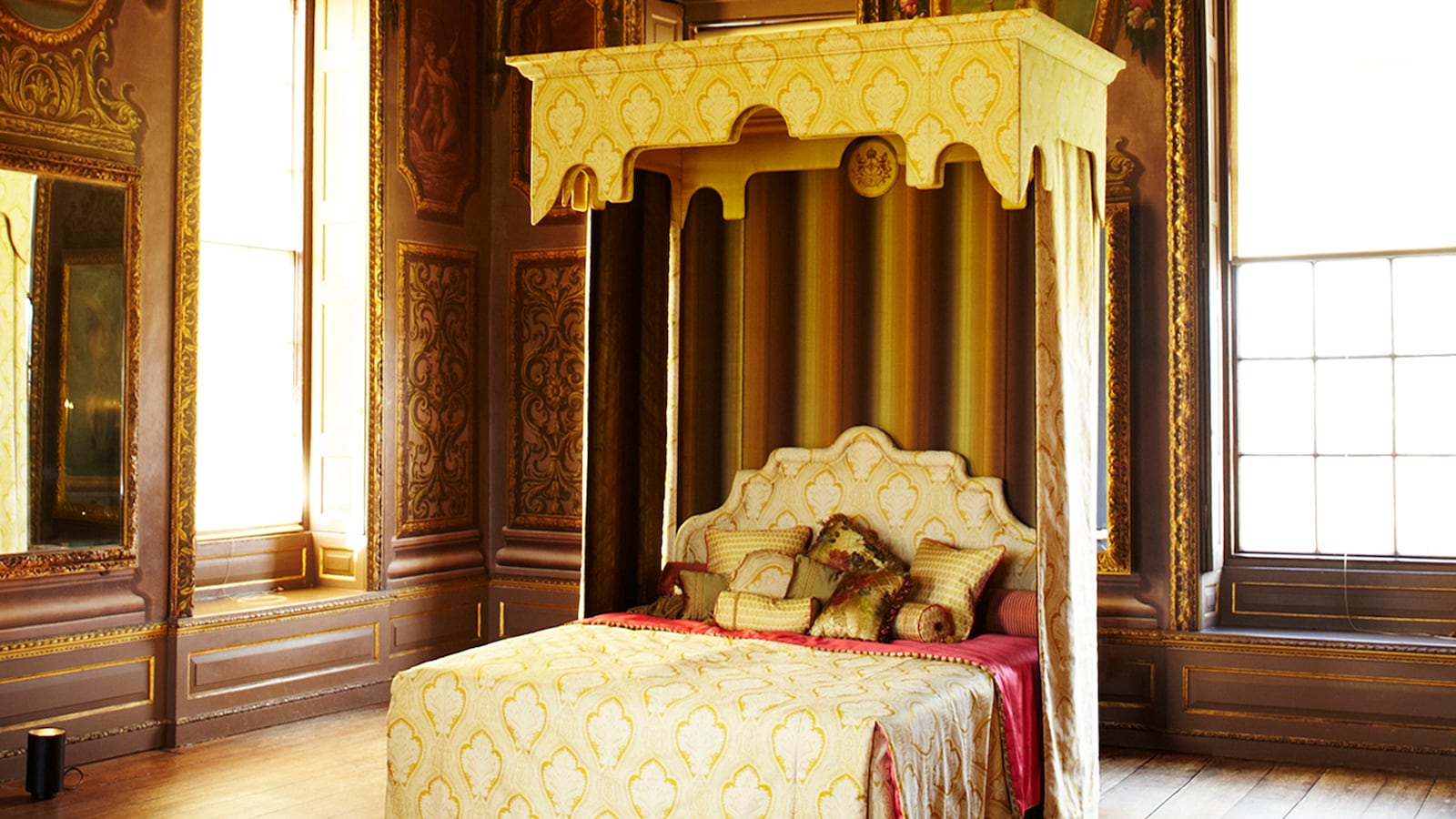I imagine it’s pretty easy to spend $175,000 in bed. (See: Berlusconi, Silvio.) But it didn’t occur to me that one could spend $175,000 on a bed. At least not until I checked out the new limited offering from high-end British bedmaker Savoir Beds.

To commemorate the 60th year of the reign of Queen Elizabeth II, Savoir Beds is producing 60 Royal State Beds, custom-designed sleeping pods for the one-tenth-of-the-one percent. One of them was available for testing this week at the Swiss Institute on Wooster Street, just a couple doors down from Savoir’s New York showroom.
“Clearly, it’s an expensive bed, there’s no questioning that,” Alistair Hughes, the bedmaker’s chief executive officer, conceded to me. “But that reflects the work that goes into it, the craftsmanship, and the materials we use.” Building one of these beauties takes 604 hours of highly skilled labor. As we spoke, a master craftsman from South Wales was on hand, stuffing horsetail hair gingerly into a sleeve for a box spring and painstakingly primping and fluffing it. While the labor is all British, the content comes from all over. The best horsetail hair comes from Latin America, at $25 a kilo. The cashmere from Mongolia. The silk thread—some 1,600 miles’ worth—on the bed and its canopy comes from Vanners in Suffolk. The crest above the bed was made by the Royal School of Needlework at Hampton Court, the same atelier that produced Kate Middleton’s wedding dress. An upholstery technique used in the 1700s makes the silk glued onto molded timberwork atop the bed look like liquid gold.
The royal allusions are intentional. “If you wanted to get the king’s ear in the 1600s, you had to go to his bedroom,” said Hughes. On my visit, I was attended by a footman and a lady dressed in period attire.
To hear Hughes tell it, $175,000 is a bargain. Consider that really rich people don’t think twice about blowing a few thousand bucks on a great bottle of wine, $50,000 on an intercontinental private jet flight, $100,000 on a car, and $1 million on a boat. But those are all fleeting experiences or items that don’t get much use. “The point is that you spend a third of your life in that bed, and it contributes massively to the two-thirds of your life that you’re not in it,” said Hughes, who studied economics at Cambridge. “If you don’t sleep well, the rest of your day isn’t that great. Besides, Savoir Beds guarantees the handiwork on these beds for 25 years, or 9,150 nights. Thus considered, you’re paying about $19 per night, far less than it costs to sleep at the Red Roof Inn.”
Maybe so. But a bed is that rare luxury product providing the greatest utility when you’re unconscious and unaware. True, Hughes conceded. “But we want you to be unaware. That’s how you’re going to have the very best recuperative sleep.” And of course, Hughes noted, (nudge nudge, wink wink) “A lot happens in bed. It’s not just about sleep, of course. You know, most of us were conceived in bed.” (Point: Hughes.)
The Savoir Beds legacy goes back at least a century. The owner of the Savoy Hotel, Richard D’Oyly Carte—a real person, not a Monty Python character—began commissioning high-quality beds from a London upholsterer in 1905. He liked the beds so much he wound up buying the company. But by the late 1990s, the Savoy brand had petered out and the company was selling off bits and pieces. Hughes saw an opportunity. The company had only two craftsmen when he acquired it in 1997. Now it has 80 working at two bedworks in South Wales and Park Royal, in West London. “They are not skills anymore that are readily available,” Hughes noted, briefly channeling Downton Abbey’s Mr. Carson. “So we’ve had to run an intensive apprentice operation.”
These are custom products. Craftsmen sign the labels of the beds they work on. And purchasers of the $175,000 bed can choose their own décor, regardless of the quality of the taste. What if I wanted the bedcovers to have a New York Yankees theme and an ironic family crest consisting of a falafel sandwich, a Dr. Brown’s cream soda, and a Philip Roth novel? “We’d be delighted,” Hughes said. “We make a bespoke product.”
How does this product play in an era of austerity? The money is still there, he notes. But people are more careful about what they spend it on. “Ten years ago, we’d have people come in and say, ‘We want your most expensive bed,’” Hughes said. The first order for the $175,000 bed came from China, naturally. And he expects more orders from the U.S., Savoir’s most important export market. The three-year-old showroom on Wooster Street is Savoir’s largest outlet, after Harrods in London. Savoir’s overall U.S. sales should rise 30 percent this year, as wealthy Americans throw money at their sleep problems. “In the States, there is quite an appetite for something that is a considered purchase,” said Hughes. “It’s not bling-bling.” It could also be the Downton Abbey effect. Savoir doesn’t have any tie-ins with the show. “But in the time of Downton they would have definitely slept on a horsetail mattress,” he said.
Do you really need to spend $175,000 to get a good night’s sleep? Clearly not. Savoir Beds sells other models that range from $10,000 to $80,000. But the $175,000 bed is pretty nice. The fabric is lustrous. Atop the mattress and box spring, Hughes reveals two “toppers,” stuffed with cashmere, horsehair, and lambswool. It was extremely comfortable. You don’t so much sink or nestle into the mattress as float on top of it. I could imagine drifting off to sleep quite comfortably in it.
But the price tag would keep me up at night.






